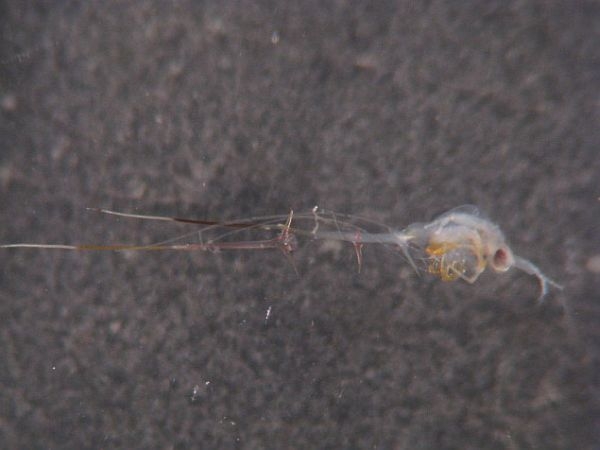
For a tiny creature, the spiny waterflea is generating a great deal of concern.
The invasive species has been spotted in the Lake Champlain Canal, just two locks away from the southern end of the lake.
Lake researchers say that the invasive species would disrupt the food web in Champlain, and pose a nuisance for anglers and boaters.
So a group of scientists is calling on New York State to immediately close a feeder canal to the Champlain canal system to stop the waterflea from reaching the big lake.
Dr. Timothy Mihuc, coordinator of the Lake Champlain Research Institute at the State University of New York in Plattsburgh, is sounding the alarm.
"I’ve often said this invasion is potentially equal to or worse in terms of its impact to the zebra mussel invasion or even the water chestnut invasion into Lake Champlain," he said.
The other two invasive species Mihuc mentioned have caused huge changes to the Lake Champlain ecosystem. Mihuc doesn’t want the lake to experience another alien invasion. So he’s circulated a letter signed by several dozen scientists that calls on New York State to close the feeder canal.
"Doing nothing now essentially just lets another invader into the lake," he said.
The waterflea is a zooplankton native to Eurasia. Mihuc is concerned that it will take over the ecological role now occupied by native plankton.
"They’re really big and they have this long spine so fish can’t really prey on them," he said. "So they sort of dominate the planktonic community because of that. In essence they restructure the food web, the middle of the food web in particular. So the planktonic community, the native plankton in Lake Champlain, will suffer greatly and these things will take up new niche space and the native community will decrease in abundance and biomass as well."
It’s not known what impact the waterflea will have on creatures higher up the food web, such as landlocked salmon or lake trout. But if the waterflea does reach the lake, anglers will see globs of the creatures as they reel in their lines. Patrick Berry is Vermont’s commissioner of Fish and Wildlife.
"Spiny waterflea do a terrible job of fouling downrigger cables, and rod eyelets and fishing lines, and it’s been a real problem where they’ve invaded in other places and definitely makes it harder to enjoy a recreational fishing experience," he said.
David Tilton is with the U-S Fish and Wildlife Service and chairs the Lake Champlain Rapid Response Task Force, the body that coordinates a response to an invasive species.
Tilton says closing the canal is the best way to stop the waterflea from reaching the lake, but first the Task Force has to find out if it’s too late.
"Before we take fairly dramatic action like closing that canal -that’s putting it lightly I think – we should know that it’s not already in Lake Champlain," he said. "And I think there are some ways to pretty efficiently check on that."
But Mihuc, the lake scientist from Plattsburgh, says the time is running out and the time to take preventive action is now.
"It would be unfortunate while we’re sitting in meetings we’re allowing the invaders, this particular invader, to enter the lake," he said.
A spokesman for the New York State Canal Corporation said it’s not feasible to close the canal. He said the feeder canal that supplies water for the Champlain Canal has to be kept open so boats can navigate the waterway.
http://www.lcbp.org/PDFs/press/PR_SpinyWaterfleaRapidResponse_7-20-12.pdf